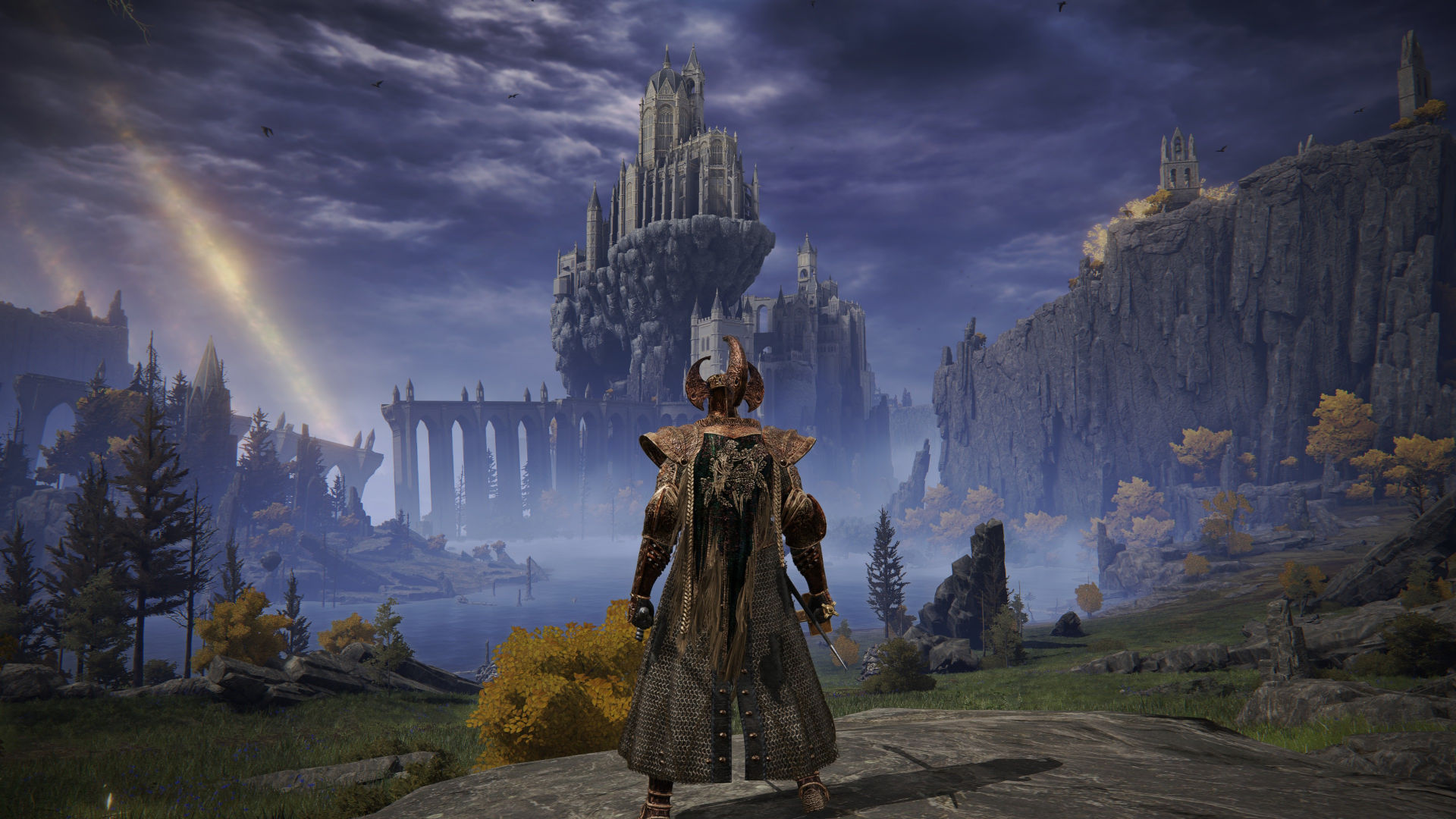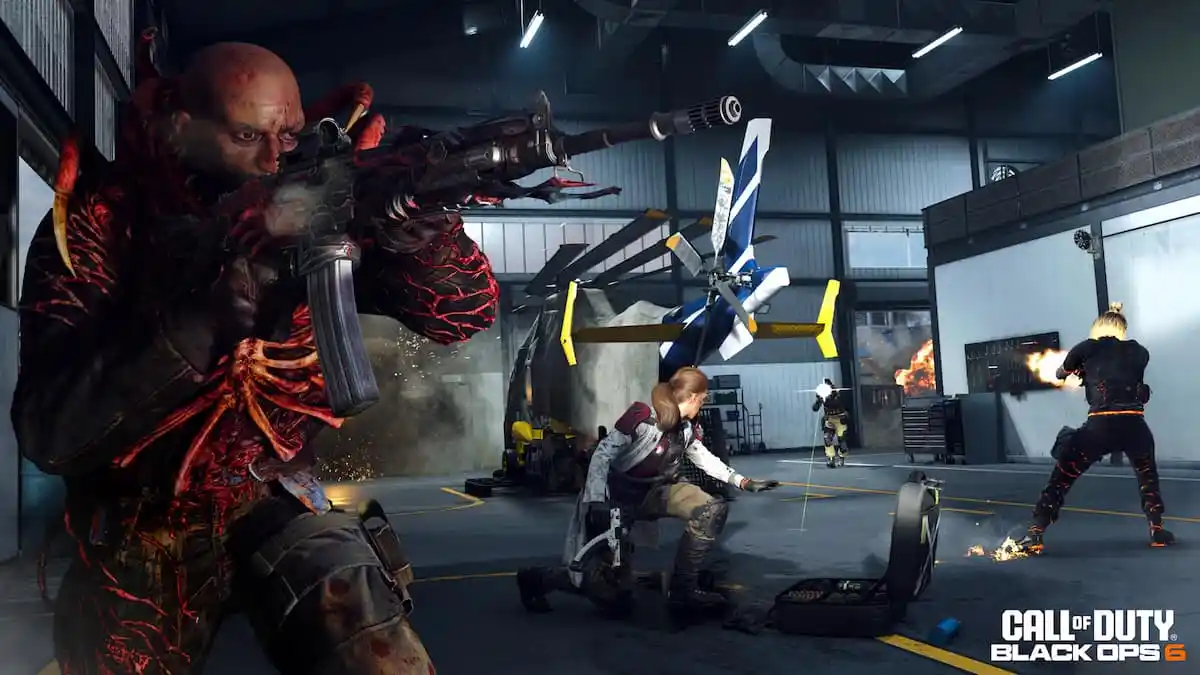
The persistent stutter issue is elusive, and some systems won't see it at all, but Elden Ring on at least one of my testing PC is still full of scarlet rot.
If you’re a long-term player of Elden Ring, you may well have been one of those PC gamers who has suffered from micro-stuttering—very brief but large drops in frame rate—throughout. All kinds of solutions have been bandied around the interwebs for it but none have truly nixed the issue. With the long-awaited expansion, Shadow of the Erdtree, and a massive 20GB patch to the base game, you may have been hoping that FromSoftware has done something about it—but I’m afraid you’re out of luck.
Elden Ring isn’t a game I’ve been interested in playing before (I’m not keen on any Souls game) but equipped with a preview code for the DLC including the full Elden Ring patch, I dived in hoping to reach the point where I could start performance testing the new region.
Yeah, I can hear the giggles from here—I hadn’t realised just how enormous the game is, or how tough the entry requirements to the Shadow of the Erdtree expansion were. So I had to abandon my attempt and settle on just examining the main regions within Elden Ring to see whether there were still the same issues in the game code.
Still, I should imagine there will be an awful lot of fans either wanting to start the game afresh, having not touched it for a while or are picking it up again determined to get to the point where they might be in with a chance of accessing the lauded new DLC. But if you were hoping that FromSoftware had added things like ultrawide screen support or raised the fps limit, then you’ll be disappointed, as nothing at all has changed in that respect.
As many of you will know, Elden Ring is capped at 60 fps and although one can remove this with an appropriate mod, you run the risk of being booted off FromSoftware’s servers or even being served with a temporary ban. So, to that end, I’ve tested the game ‘as in’ and I’ve only covered two settings: 1080p on Low quality and 4K on Maximum quality.
The reason for that mostly concerns the fact that the frame rate cap is pretty low, so most PC gamers will be able to find a screen resolution and quality settings combination that will run the game just fine.
However, overall performance hasn’t been an issue for most Elden Ring players—the main complaints have always been about stuttering, especially micro-stuttering. This is where the performance very briefly drops by a large margin and in the case of micro-stuttering, it’s so brief that normal benchmarks often don’t pick it up. In real-time gameplay, though, it makes the whole experience feel somewhat detached as if the game is input lagging, even though the frame rate is fine.
I’m using four different platforms (two AMD, two Intel) and a range of graphics cards to see how everything works with the new Shadow of the Erdtree patch. The figures to focus on are the 1% and 0.1% Low values—essentially these numbers are saying that for 99% and 99.9% of the time, the frame rate is greater than those figures. Stuttering can present itself here, resulting in a big gap to the average frame rate.
For the most part, Elden Ring ran fine on each of my test bench machines, except for the Core i7 14700KF setup. That one stutters so badly I thought there might be something wrong with the PC, but no other game runs like that on it and a deeper analysis shows there to be no obvious issue with the PC itself.
To show you what I mean by how bad the stuttering is, here’s a graph of recorded frame times (how long it takes between two successive frame presents) for the Core i7 14700KF and RTX 4080 Super PC. A game running at a constant 60 fps should produce a flat line around the 17 milliseconds region but you can see major spikes everywhere, some as high as 100 milliseconds, just from running around the open world.
The other Intel PC, and the two AMD systems, didn’t show anything as bad as this, regardless of what GPU was used. There were still spikes in the frame time, so stuttering was still present, but the highest recorded was just under 30 milliseconds (equivalent to a low of 33 fps). To try and understand what was going on, I used a combination of Microsoft’s Pix and Nvidia’s Nsight software tools to analyse how the game’s engine, CPU, and GPU were all performing.
It’s worth noting that, while Elden Ring is a DirectX 12 game, with a multi-threaded engine, it’s not especially modern in terms of rendering techniques. Where the likes of Cyberpunk 2077 use a veritable mountain of compute shaders for the bulk of the GPU workload, Elden Ring is more traditional, relying heavily on pixel shaders for the graphics.
There’s a little bit of hull and domain shader usage early in a frame, to handle geometry, a brief burst of compute shader midway through the frame, and there’s an option to use ray tracing, but overall, it’s a little bit old-school.
4K max settings, with ray tracing, isn’t a massive workload for a top-end GPU (Image credit: Future)
Those software development tools both show that the issue isn’t anything to do with the GPU—that RTX 4080 Super is being massively under-utilised—but there are some interesting things to note. Firstly, Nsight repeatedly warns that, in each frame, more time is being spent processing command lists than it takes for the GPU to process the instructions. A command list is what one would imagine it to be, a sequence of shader instructions, but there is no indication that this is the root cause of the stuttering.
Those red blocks are where the game has completely stalled. (Image credit: Future)
The next thing of note is where stuttering takes place, Nsight reports that the threads managing the rendering are being heavily stalled. In most cases, it is down to an instruction telling the GPU to swap buffers and present the one just finished, taking as long as 60 milliseconds or more to be executed by the CPU.
Elden Ring’s engine uses a main thread to manage the rendering but distributes the processing of the command lists across seven ‘worker’ threads. These often get stalled, simply because they’ve finished their tasks and are just waiting for the next batch to process. However, where the frame time notably exceeds 16 milliseconds, all of the game’s threads are stalled due to the buffer swap/present issue—the entire game freezes until that process is done.
As mentioned before, no other game does this on my 14700KF gaming PC and I’ve tested a lot of games with Pix and Nsight on that system. So it’s unlikely there’s anything wrong with that setup and it’s more likely to be an issue with Elden Ring itself. Frustratingly, I was unable to examine whether this behaviour was present on the other PCs as neither Nsight nor Pix would run or attach correctly to the game.
If you’re lucky, it will run as smooth as silk, with only the occasional stutter spoiling, but if you’re full of scarlet rot, it’ll be a stop-start, glitchy mess.
I could tell that stuttering was taking place on the other systems, sometimes only minutely so, but perhaps that was down to the fact that I was openly ‘looking’ for it. That said, one can still see the brief spikes in frame times in all the charts further up.
But what about Shadow of the Erdtree? I’m far off getting there but that’s not the case for some of my colleagues. I’ve canvassed the PC Gamer staff who have been busy playing and exploring the Shadow of the Erdtree DLC whether they’ve noticed anything untoward and just like with the original game, it’s a bit of a mixed bag of results:
“I haven’t experienced any stuttering in the DLC so far.”
“While I’ve still been having the occasional frame dips and even a couple of crashes—one time from picking up a mushroom—I haven’t experienced any of the massive mid-boss battle-ending frame drops that the base game was infamous for.”
“I’ve definitely noticed the same micro stutters as the base game, as well as those occasional moments where it will freeze and hang for a good few seconds before everything catches up. This is largely in line with the original experience, with the added pain point of a few areas where my fps dives into the 40s, usually particularly complicated open world vistas, and often ones with Erdtree’s new waterfalls.”
(Image credit: Future)
Best gaming PC: The top pre-built machines.
Best gaming laptop: Great devices for mobile gaming.
I think it’s fair to say that while my testing hasn’t provided any conclusive evidence of FromSoftware making any improvements (or…umm…dis-improvements) to how well Elden Ring runs, I can at least say that the micro-stuttering—or mega-stuttering with 14700KF system—is still there, but not everyone will necessarily experience it.
If you’re lucky, it will run like it did on my Ryzen 9 7900 and Radeon RX 7800 XT test system—smooth as silk, with only the occasional, minor stutter spoiling things. But if you’re full of scarlet rot, like my 14700KF system, then it’ll be a stop-start, glitchy mess.
Elden Ring: It is the best of times, it is the worst of times. Sorry, Charles.





